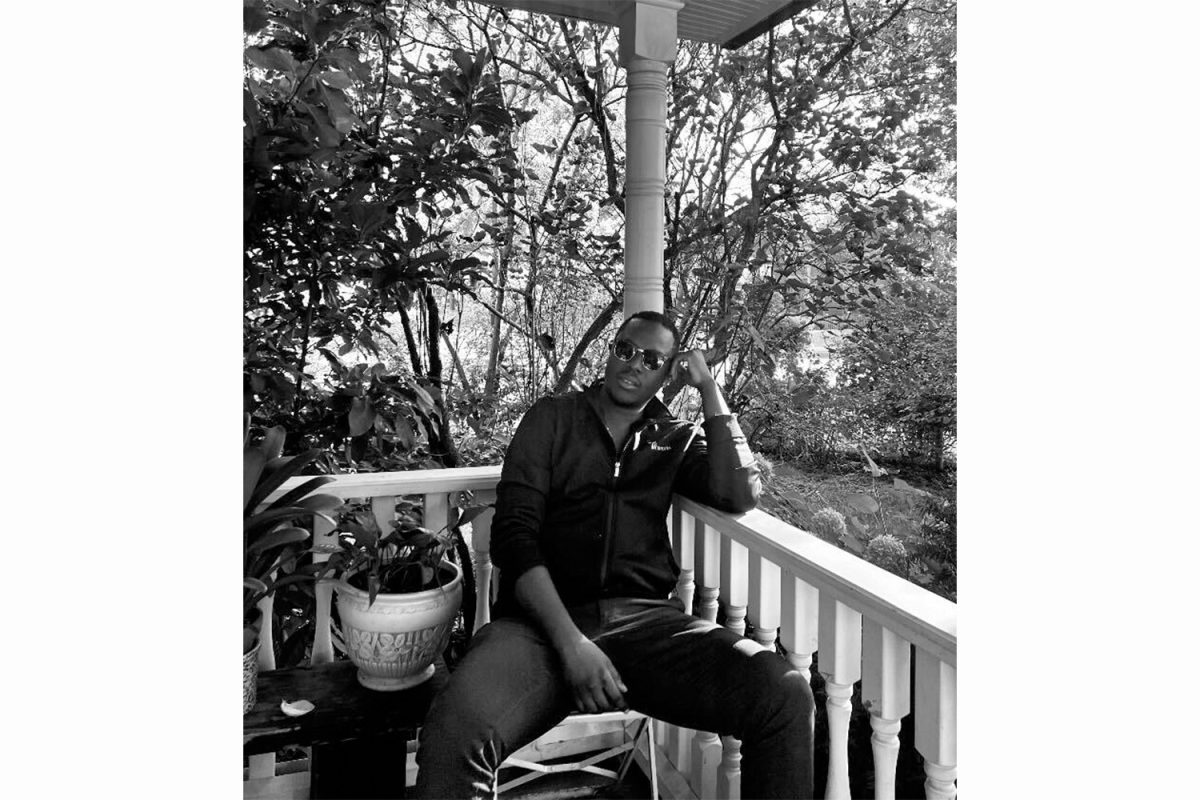The Johnson County Fairgrounds’ Montgomery Hall overflowed with green-shirted children on July 25, all toting matted photographs or data-covered poster-boards and textile displays.
“They’ll have close to 2,000 projects in this building, upstairs and downstairs,” said the youth director of the Johnson County Four-H/Future Farmers of America Fair, Gene Mohling, gesturing at the organized chaos surrounding him. “Anything from paintings to photography to food and nutrition to clothing — you name it.”
While the judging of non-animal exhibits took place on July 25 — and the larger animals moved onto the premises Sunday afternoon — the Johnson County Fair kicked off Monday with a volleyball contest and the crowning of the fair queen. The fair will close with a livestock auction Friday.
“It’s been very laid-back,” Mohling said. “The weather’s been great — we haven’t had that 100-degree stuff we usually get at fair time. We’re really pleased.”
The same could not be said last year — the staff hustled during the days before the start of the fair to help relocate victims of the flood who had used the facilities, 4261 Oak Crest Hill Road S.E.
“We had the Red Cross out here, we had the Small Business Administration out here, we had the animal shelter out here … for probably a month,” Mohling said. “You know, the facilities had to be cleaned, and prepped, and readied, because they were housing animals in them, dogs and cats … until about a week or 10 days before the fair.”
Despite the hardships on the county’s communities because of the natural disaster, Mohling — who has spent the past 15 years working with the Iowa State University Extension Office to help run regional Four-H fairs — said membership numbers are up.
“Tremendously,” he said. “Up tremendously.”
With an 8 percent growth in membership this year — on top of last year’s 6 percent — Mohling says Friday’s totals will show the true success of the fair.
“We’ve got a solid 500 kids in the program here in the county,” he said. “That’s a pretty strong, sizable program. It’s just now starting to reflect in our exhibit numbers and our participation.”
Seasoned photography judge Greg Brenneman spent the morning of July 25 experiencing just how sizable a program Johnson County can produce.
“I started at 8 a.m., and it’s been just nonstop,” he said, shaking his head.
County Four-H-ers, ranging in age from 9 to 18, waited patiently for their one-on-one time with the four judges, appointed to determine which of the almost 1,000 photography exhibits should be presented with the most prestigious of awards — a trip to the Iowa State Fair this August.
“You know, you want to spend time with each exhibit and each Four-H-er, but you need to try to keep moving things along,” said Brenneman, an agricultural engineer when he’s not judging at fairs across the state. “I don’t know if I spend 10 minutes per Four-H-er.”
At the end of the day, he and his judging counterparts make their choices, selecting those photographs to be sent to the State Fair, to be listed as “Alternates,” and to join the photo display that will travel around the county. He described a photo that had everything he looked for — composition, lighting, detail.
“Usually, I’m not much of one for kitten photos — believe me, I’ve seen lots of photos of dogs and cats, because ‘It’s my dog’ and ‘It’s my cat,’ ” he said, drawling in humorous imitation. “But this one was a kitten in a flower pot, and it was a very well-composed photo. Excellent color in it, with the bright blue eyes of the kitten, that you could see all the detail of the shades of blue in them. That’s one of the things that I tend to be kind of a sucker for — sharp detail.”
While the Four-H Fair exhibits are open to the public at no cost, the fairgrounds is hosting a carnival this week that charges a fee. Some public events, such as today’s pie contest and steer rodeo, are free, including this evening’s fireworks display at dusk.
Though often presented as a largely rural activity, this year’s Four-H Fair boasts approximately 3,000 exhibits — and only a third of those were of the living-and-breathing variety.
“There’s photography, woodworking, clothing, food, and nutrition,” Mohling said, listing of a variety of project areas offered to Four-H participants. “And then all the youth educational communication components, events such as Share the Fun — which is the arts — and then we have educational presentations, extemporaneous speaking, working exhibits.”
That’s not including the 300-some horse and pony entries and the large dog-obedience program enrollment.
“I think that we have a good balance,” Mohling said. “I don’t want to use the words ‘ruralized’ or ‘urbanized,’ but I think we have a good balance, a good blend.”
Youth coordinator Dianna Colgan has overseen the Johnson County Four-H club program, under the umbrella of the ISU Extension Office, for the past 10 years. Though she admits to some “friendly rivalry” — being an ISU graduate — she says the county Four-H has a growing involvement with the UI community.
“We’re unique as a county extension Four-H, because we also have a sister organization, which is Big Brothers Big Sisters,” she said. “We have a lot of university students who serve as school buddies or Big Brothers Big Sisters. And we’re also really enforcing the sciences here lately, and so we have be working with the UI College of Engineering, doing some special things with it.”
Colgan, a former Four-H-er from Marion County and mother of three, believes in the program and the outreach it introduces to Johnson County youths.
“The biggest thing is just the life skills that kids learn through Four-H,” she said. “The communication, leadership, and citizenship.”
And the Johnson County Fairgrounds houses one of the largest collections of youth artwork on display in the area.
“We’re so much more than cows and pigs,” Colgan said. “So much more.”






